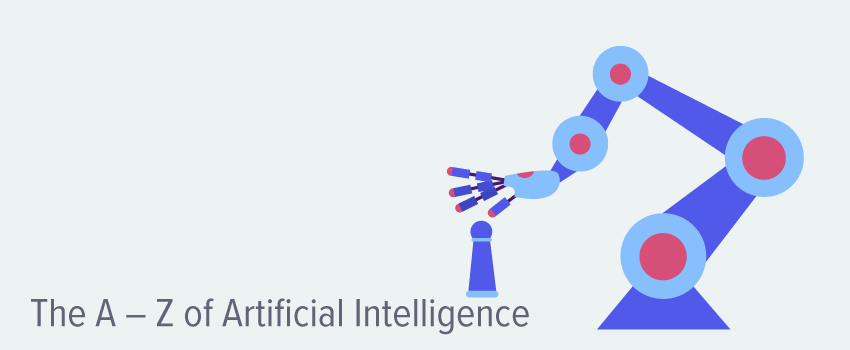
IT Service Management Futures: Be a Disruptor Not the Disrupted
Is IT service management (ITSM) under attack from the technology “unicorns” and things like DevOps and Lean? Many of the articles we read in the IT media would suggest so. They either forget to mention ITSM in favor of cloud, agile, DevOps, and continuous delivery, or paint ITSM as an old-fashioned and possibly obsolete concept. For instance:
- Netflix say they “get out of the way of innovation” by eliminating roles and processes
- AWS push code to production every eleven seconds, no CAB required
- Royal Philips sign their suppliers up to consumption-led agreements
- The tower model is dying in government
- Lean and DevOps impact ITSM
Some say that there’s a technology perfect storm, or a Nexus of Forces (as per Gartner, the global research and advisory firm), or that we are seeing the emergence of the Third Platform –a selection of technology-related trends that are disrupting IT, and thus ITSM, as we know it.
So technology is disrupting ITSM, but should IT just try to ride this wave-of-disruption or should it look to be the disruptor not the disrupted? In other words – how can ITSM take the opportunity to disrupt itself?
It’s time for us ITSMers to stand up and say “I’m Spartacus”… sorry, I meant to say that it’s time for us ITSMers to stand up and be counted. I know I don’t like being disrupted.
How web-scale is disrupting IT service management
The “noise” generated by cloud, lean, and DevOps is disproportionately larger than the current IT industry impact. The cloud market is still only 3% of the enterprise IT market, being approximately $100bn compared to the overall enterprise IT market size of over $3tn. It doesn’t mean that the message is irrelevant – far from it, but we do have to put things in perspective. And no, this doesn’t mean that I’m advocating that you spend the rest of your day staring out the window at the passing clouds.
It’s common to hear traditional businesses with mature ITSM organizations be dismissive of the technology unicorns (such as Netflix, Google, Facebook, and Amazon), and to say that their web-scale, simple applications are no match for the complexity of an enterprise’s. While that may or may not be true, it shouldn’t be a barrier to change and the art of the possible.
Web-scale companies might be open-sourcing their IT management and ITSM toolsets, which is disrupting the ITSM vendor market, albeit in a still small way (as using open source software is often viewed as a risk by larger enterprises). The IT management methods that web-scale companies are embracing, such as the Simian Army, are changing the thinking (and the approaches) of open-minded staff, which is leading to new ways of working that can be incongruous with traditional ITIL (the ITSM best practice framework) process definitions. For example, one such method is “design for failure,” where instead of IT failures being something to eradicate, they are something to be embraced, to be expected, and to be protected against.
Social and mobile are intelligent IT service management communication channels
ITSM tools can help people make decisions about the services they run and the technology that the services run on, plus to report and resolve IT issues.
To do this, people need to be able to communicate – whether it’s face-to-face, virtual meetings (or remote support sessions), telephone, email, chat, or online communities/forums/workspaces. However “social plus mobile” adds more than just a way to communicate and share – it opens up the ITSM tool user interface (UI) to more devices and applications. So if an organization embraces an API strategy, they can then write their own applications to interact with the ITSM tool and data, and are no longer constrained by the capabilities offered by the ITSM tool provider.
These channels can be analyzed by machines to work out the proportion of discussion about specific services, or incidents, and even be used with natural language systems to ask human-like questions in real-time of the system, using platforms such as Splunk. That reminds me, where did I leave my Kerplunk?
Compare this to the olden days, where the IT ticketing system is only accessible from a desktop PC, reporting and analysis were limited, and you had to use ugly forms that never seemed to quite fit what you needed to do. ITSM tools have already changed for the better but there is still so much more that can be done – especially in term of social and mobile.
Analytics and cloud can give better IT service management insights
The olden day use of data warehousing was a restrictive and costly way of getting insights from ITSM data. Thankfully we now have easily-available technology, like business intelligence, big data, and machine learning – which offer us ever more ways to store and analyze data. They are also relatively frictionless to use, in terms of cost, complexity, and time.
As I wrote in a previous blog, ITSM needs to be driven by a data culture: while ITSM is about people, process, and technology (to quote ITIL) it also has a wealth of data at its heart. By using the latest database technologies, and choosing the right tool for the job (such as a graph databases), ITSM professionals can find previously unknown relationships in ITSM data. Unlocking new IT and business value from the ITSM data.
Cloud systems, through which organizations can quickly ramp up analysis and experimental systems to learn new insights from ITSM data, are very cost effective. It’s the complete antithesis of traditional data warehouse systems, with long lead times, and high cost and complexity. These days, it’s relatively easy to leverage the best in machine learning on-demand with Azure and AWS by plugging in your ITSM tool and data.
Make IT service management a disruptive power
If an IT organization, and its ITSM team(s), can embrace the latest technology trends, they have the potential to move from being seen as a “control brake” on IT and business change to instead being seen as a powerful flywheel of innovation.
To do this, though, a modern ITSM ecosystem (the people, process, and technology) must disrupt itself by:
- Embracing social channels and being careful not to over-curate them. Allowing the users to develop their own ecosystem will mean that the system will more likely reflect reality, not just some central admins worldview.
- Reducing ITSM user friction by letting them access the tool and data from anywhere using any device, plus using friction-free tools like single sign-on to allow easy access to all IT or enterprise applications
- Opening up the ITSM data, through APIs, to allow people to experiment in ways of getting ITSM data in and out of the system, and on the data itself.
- Making ITSM systems cloud-aware so experiments can be run in very short time frames for low costs – encouraging innovation.
These types of change are happening elsewhere in the organization so why not for ITSM?
It’s critical for ITSM to disrupt itself before it is disrupted by other forces – ensure that you are the disruptor not the disrupted.






